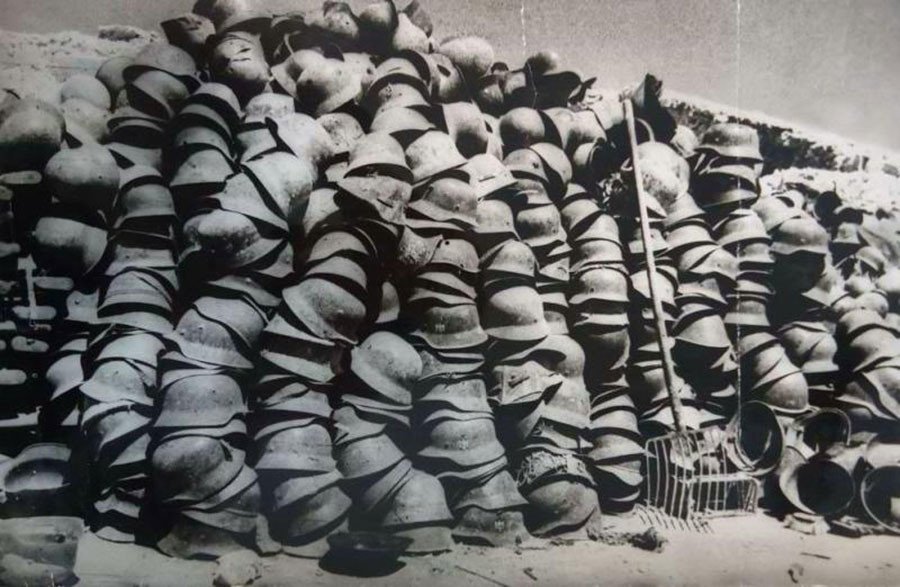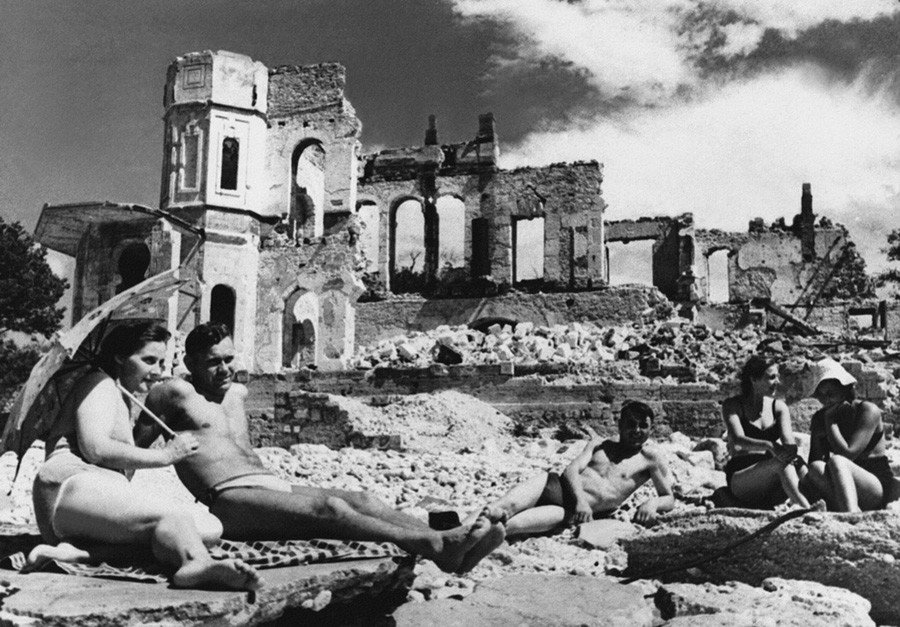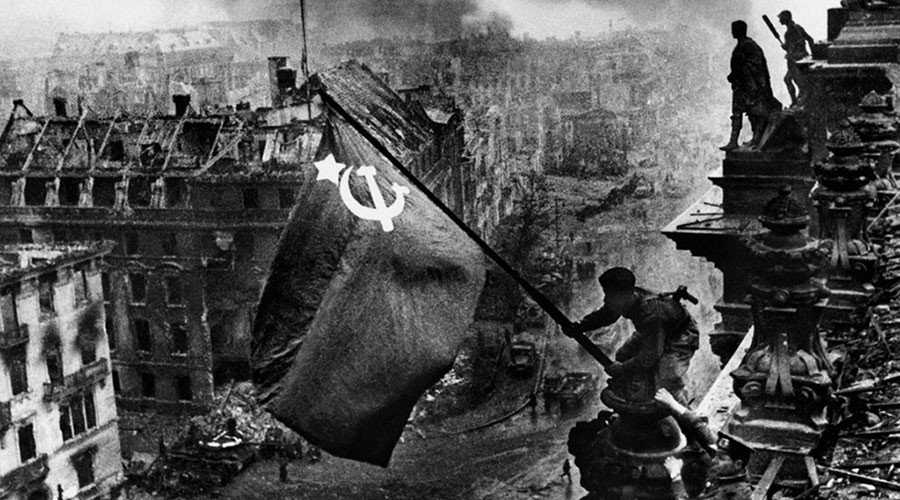1,418 days of WWII viewed through lens of legendary Soviet photographer (GRAPHIC IMAGES)

Soviet photographer Yevgeny Khaldei never parted with his camera, and spent 1,418 days photographing heart-wrenching moments of WWII. His iconic images, including “Raising a Flag over the Reichstag,” were shot on a Leica.
Khaldei made his first camera out of cardboard boxes, creating a lens from a pair of old glasses. He was 13.
When the teen, whose mother and grandfather were killed during the Jewish pogrom in Ukraine in 1918, began working at a local plant, he bought himself a decent camera and published his first amateur photographs in a local newspaper. Some of the negatives were sent to Moscow, and in the early 1930s, Khaldei’s pictures finally saw the light of the day in the prominent Izvestia newspaper. He later continued his career as a staff photographer at TASS news agency.
READ MORE: Through time: Photographer revisits spots of historic Stalingrad battle pictures (PHOTOS)
There were two major forces operating in his work: compassion and terror. Khaldei was a recorder of history, making uncompromising shots in the line of fire.

He pressed the shutter at the peak of action during the Battle for Moscow, which lasted from late autumn 1941 to mid-spring 1942, marking the first major defeat of Nazi Germany in WWII, and during the epic Battle of Stalingrad, which became the turning point in the war.

The bloody confrontation lasted between August 1942 and February 2, 1943, claiming the lives of nearly two million people on both sides. He traveled with the Soviet Army to take part in the liberation of Romania, Bulgaria, Yugoslavia, Austria, Hungary, and Germany amid fierce fighting.

During the Vienna Offensive, launched by the Soviet 3rd Ukrainian Front in 1945, a fascist killed his entire family at a park before committing suicide. Soviet General Dmitry Shepilov examines the crime scene along with his soldiers.

Vitya Cherevichkin, a Rostov-on-Don resident, was shot dead by the Germans after they found out that the teen was hiding pigeons in his barn. Before retreating in 1941, the Nazi command issued a decree ordering the troops to get rid of all pigeons for fear that these birds could be used to transmit secret messages. Cherevichkin had hid his pigeons for only a week before he was captured, interrogated, accused of complicity with the Red Army, and shot dead.

Khaldei's pictures of Hermann Goering, once the second-most powerful man in Germany, at the Nuremberg trials depicted the face of evil better than a thousand words. Goering was the one who ordered German Security Police Chief Reinhard Heydrich to organize and coordinate a “final solution” to the “Jewish question.” Goering, who founded the Gestapo in 1933, was the second-highest-ranking Nazi official tried at Nuremberg. The former Commander of the Luftwaffe (German Air Force) and Director of the Four Year Plan for the German economy, was convicted of war crimes and crimes against humanity at the Nuremberg trials.

The Austrian capital was bombed 52 times in WWII and suffered extensive damage.

The shooting of civilians by Nazi troops. Prison in Rostov-on-Don. February-March 1943. Khaldei could barely control his feelings of rage and despair as he took photographs of corpses, but without this evidence, no one would have believed that the atrocities of the war had ever happened.

Female fighter pilots of the 46th “Taman” Guards Night Bomber Aviation Regiment enjoying some rare moments of silence and quiet in September 1942. The Nazi called these fearless women, aged from 17 to 26, Nachthexen (night witches). Over the course of four years, they flew over 24,000 missions, dropped more than 23,000 bombs, and destroyed hundreds of key enemy infrastructure facilities.

Khaldei documented the hopeless plight of Jews as they were liberated from the ghetto of Budapest, yellow Stars of David glued to their chests, in 1945.

Having photographed world leaders Joseph Stalin, Winston Churchill, and Harry S. Truman at the historic Potsdam Conference in 1945, the photographer also captured rare images of ordinary people and their everyday life during the war.



Khaldei’s signature shot, “Raising a Flag over the Reichstag,” is considered symbolic of the Soviet victory over Nazi Germany. Soviet soldiers hoisted a hammer-and-sickle flag over the Reichstag on April 30, 1945. But Khaldei actually took his famous picture the day after. When the war photographer approached the site in Berlin, the fighting had already subsided, and many flags fluttered at the Reichstag. Even so, he had to capture the historic moment. The photographer decided to ask some Soviet soldiers to climb on the Reichstag, set a sickle-and-hammer flag again, and pose for him. Khaldei’s shot entered the history books – despite the fact that in reality the photo was staged.














